Statement:
2nd Generation: Other
I’m exploring the visual relationship of my identity as American and LatinX through the fusion of fragments. My aesthetics and experiences are influenced by various cultures within the United States with a strong connection to my own Bolivian traditions and folklore. As the only American-born in my family, my sense of belonging wavered between being too American to be Bolivian, and too “other” to be American. This sense of not belonging gave me the power to belong to nothing and everything.
The ability to experience traditional Bolivian culture outside of its place of origin was cultivated through the practices of my family—especially my mother—who kept it alive far from the homeland. I jointly experienced U.S and global contemporary/pop culture right alongside Bolivian traditions and through my work I bring together two realms of culture that shape my daily life.
Within my work I introduce Bolivian traditions that were passed down to me from family members and Bolivian elders. I smash together Bolivian costumery and folklore with streetwear culture or consumerist culture to distinguish myself as both Bolivian and American; a 21st century cosmopolitan. Traditionally, Bolivian folkloric costumes are only used in religious pillages during Carnivals once a year, but in the U.S we use them as tools of cultural preservation and to honor the folkloric tradition on a monthly basis. Many of the costumes are made only to wear once and fashion in America is fast with trends constantly changing. I like to use and display various types of fabrics that speak to their place of origin or are very recognizable as indicators of time, place, and use. Disrupting the setting within my work serves as a tool to discuss themes of displacement and “not belonging” but also reclamation and ownership to a given place. Also being able to take the mountains of Bolivia and the cityscapes of NYC so they can live side by side in my works answers a longing for home and success. My use of Bolivian masks helps to further explain the sense of hidden or chosen identity that protects from daily interactions and defends from an erasure of culture. Additionally, I explore the craft of sewing and embellishment to create the movement and sparkle of Bolivian costumes and dance.
My art is my own unmasking and proclamation of culture. I use the word welding to describe it: the fused culture that can still function separately but are brought together within me. This welding of traditions and culture in my life and work spans from photography, to painting, to collage in order to show a variety of textures and practices. I want to emphasize that in a melting pot like the U.S.—or any cosmopolitan city—historic assimilation has forced “foreign” people to conform to the dominant culture and forget their own. But I am proudly showing off traditional culture that at one point in our history sparked violence and backlash and I am interested in allowing the viewer to unmask and consider a possibility of exchange from my culture to theirs.

Culture Smash (1), photograph of installation, sneakers and objects, 2020

Culture Smash (2), photograph of installation, sneakers and objects, 2020
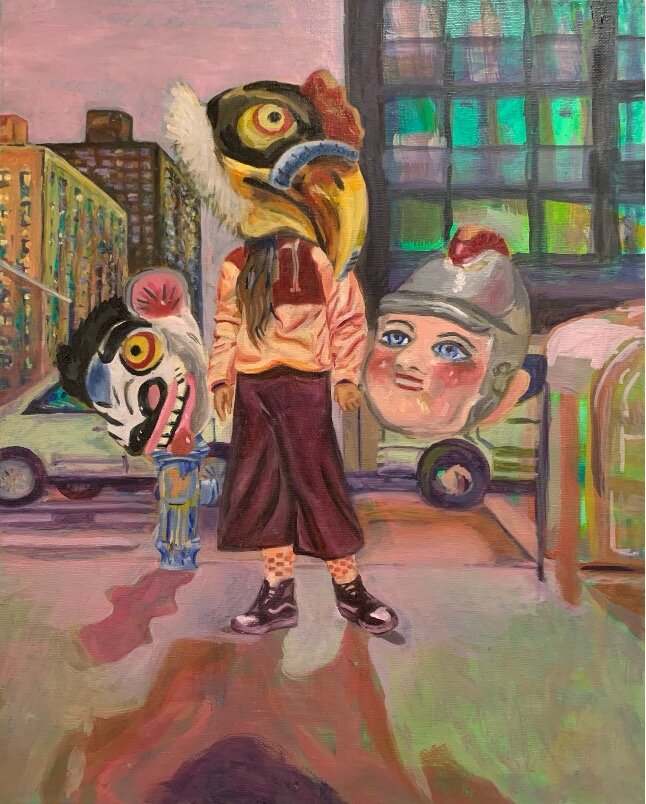
Ponté, oil on canvas, 16x20”, 2020
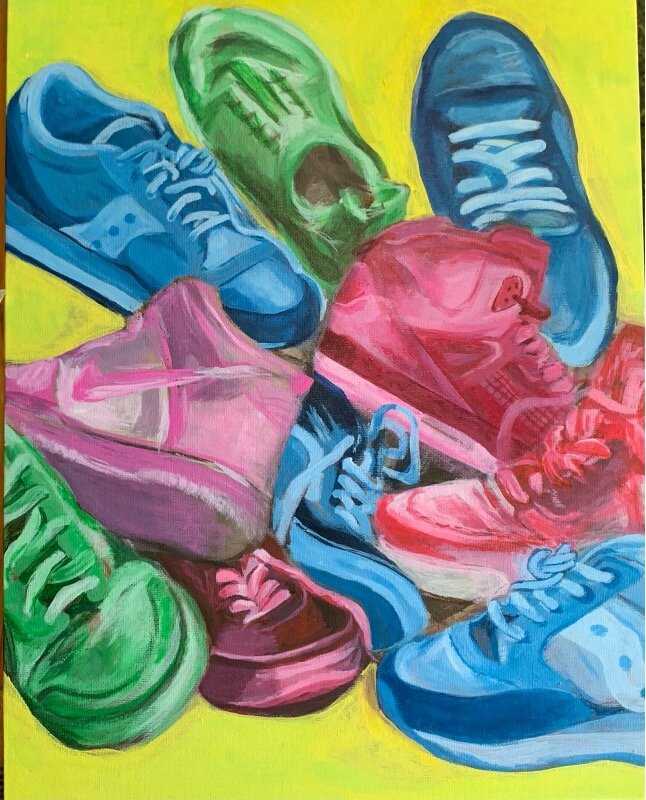
Collection, acrylic on canvas, 16x20”, 2020
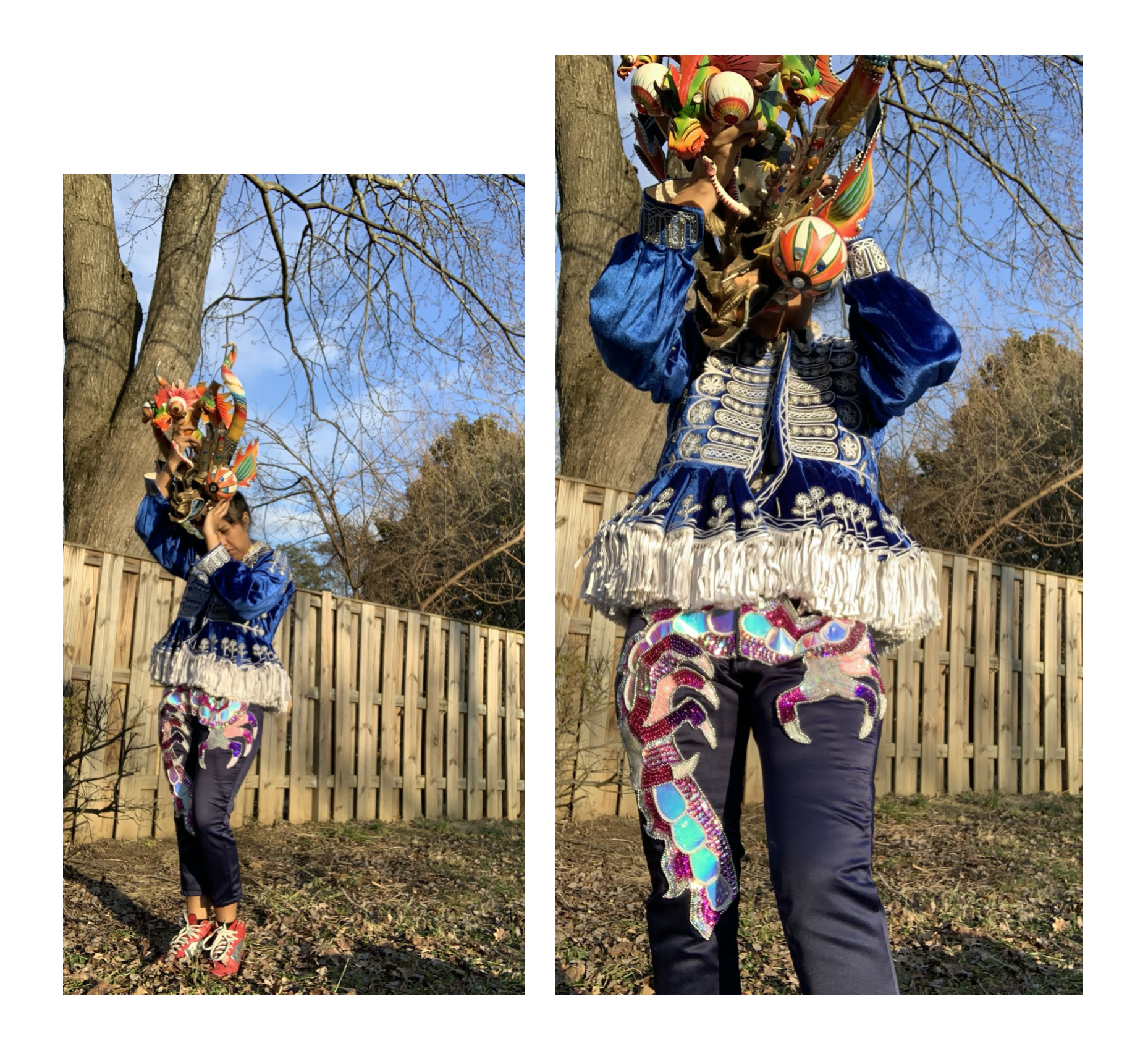
De Todo, diptych photograph, size varies, 2021

Carnival, sequin, mask parts, acrylic, and oil, 8x8”, 2021

Illimani SB, silkscreen, 9x12”, 2021
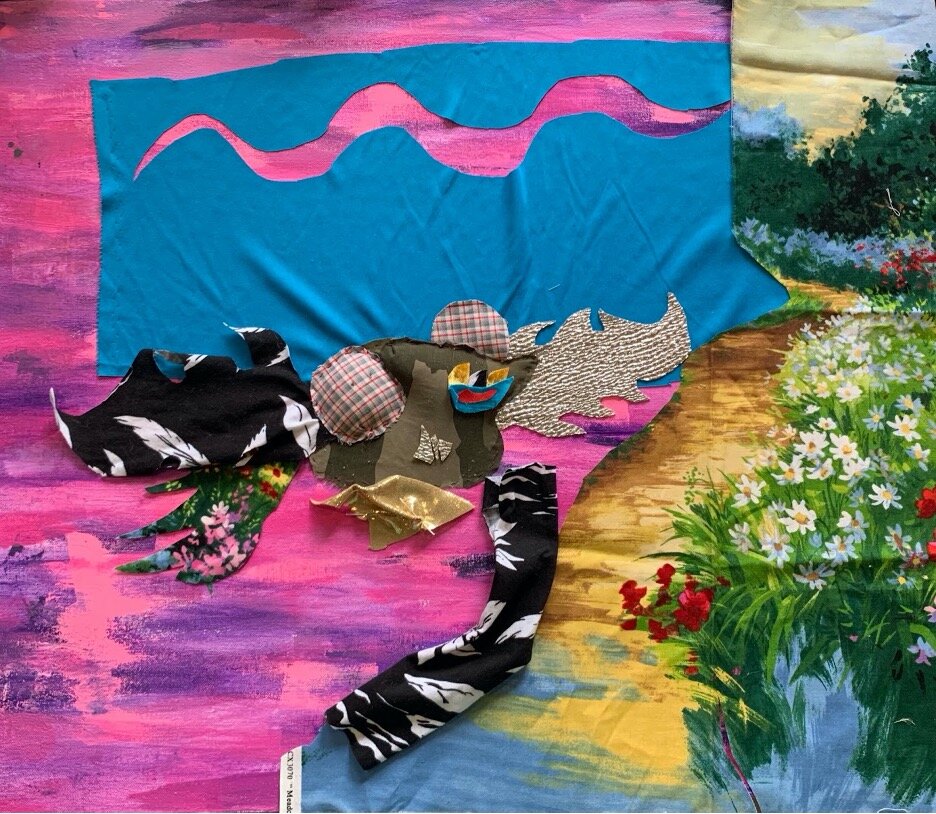
Diablo, acrylic, fabric, needle and thread, 16x20”, 2021
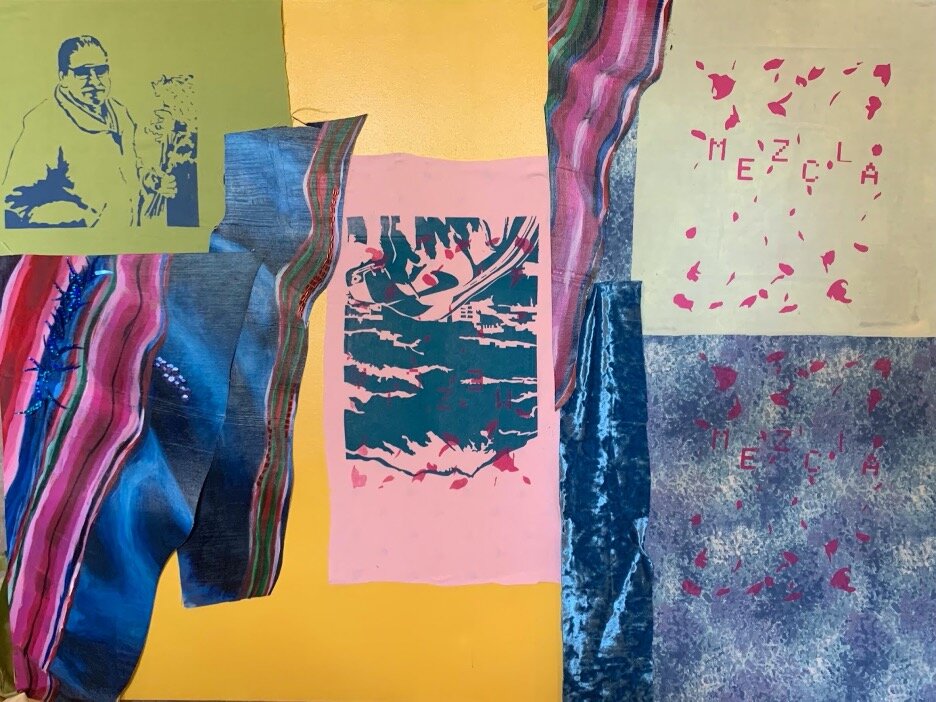
Mezcla, fabric, oil on canvas pieces, and screenprinting ink, 24x36”, 2021
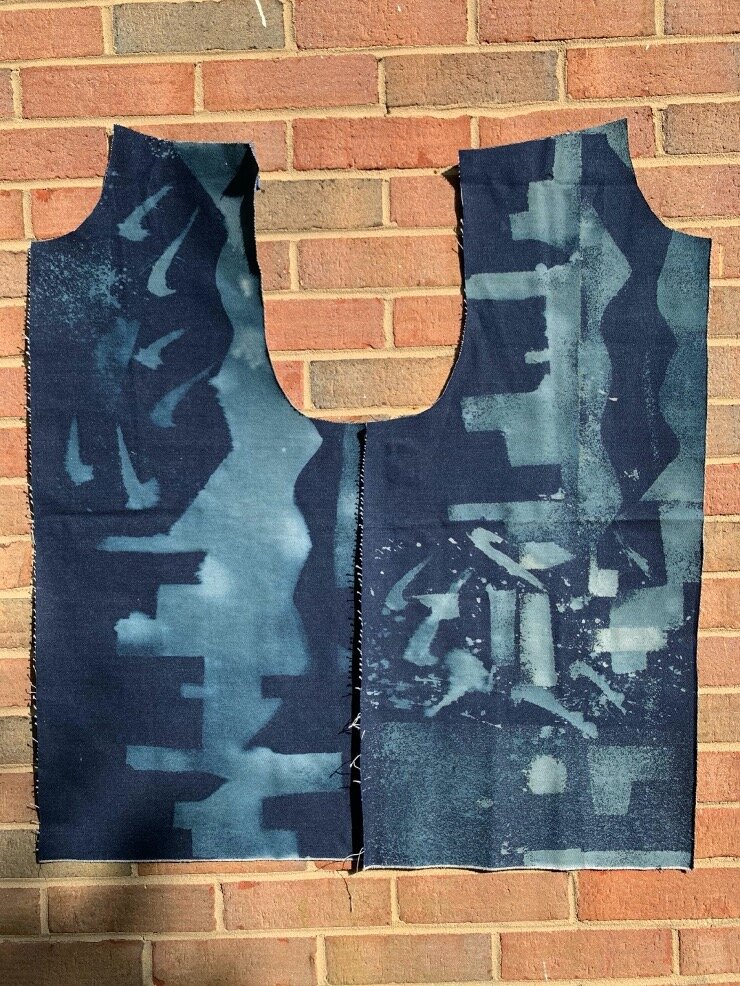
Juntos, stenciled bleach on denim, 27x30”, 2021

